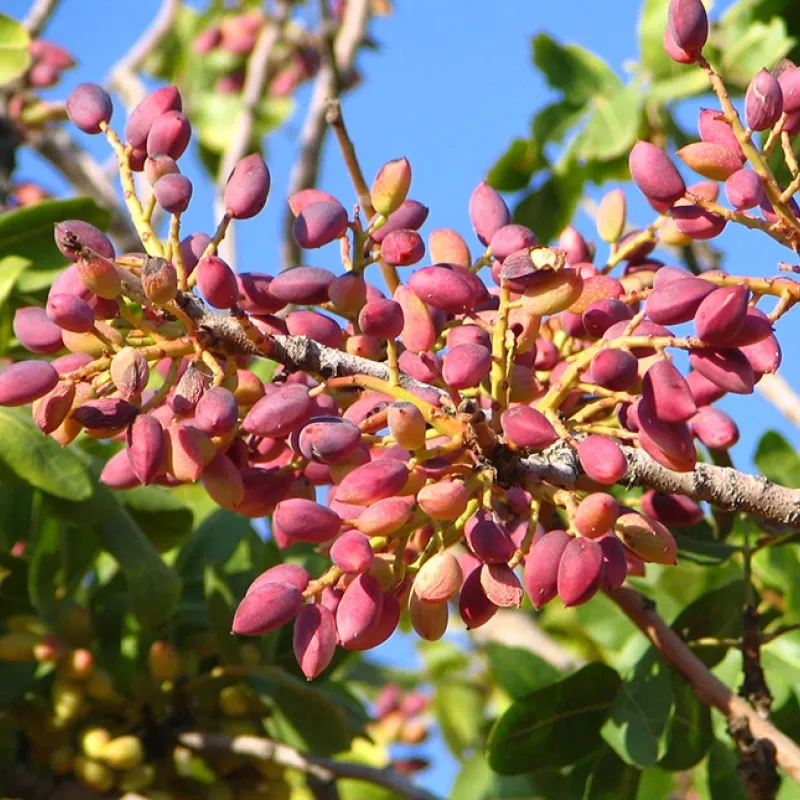Out Of Stock

The most widely cultivated variety of pistachio prized for its hardiness and productivity. This selection is appreciated for its large, round and tasty fruits with green seeds, which are commonly consumed fresh or roasted. It prefers sandy-loamy, limestone soils that are deep and well-drained. The pistachio tree thrives particularly well in a continental Mediterranean climate with long, dry, and hot summers and dry, quite cold winters. Pistachios, like walnuts and almonds, are oilseeds or nuts. They are rich in lipids, complex carbohydrates, proteins, vitamins B, K, and E. They also contain manganese, phosphorus, and magnesium.
Origin: female variety of pistachio tree originating from IranThe wild Pistacia vera is native to Central Asia, particularly Iran and Turkestan. In these mountainous, harsh, arid regions, which are very hot in summer and cold and dry in winter, it survives in the form of sparse and residual forests called wooded steppes. The cultivation of the pistachio tree dates back approximately 4000 years. It originated in the northern part of present-day Iraq and then spread to all Mediterranean regions under the influence of the Romans. This tree, emblematic of Mediterranean civilization, along with the almond tree, the olive tree, and the pomegranate tree, is once again being considered. Its low water requirements, as well as its high added value, attract the attention of agronomists and farmers who see it as a tree of the future in the face of climate change. The true Pistachio tree belongs to the Anacardiaceae family, just like the mango tree, and the cashew tree.
| Rootstock | |
| Rootstock | UCB1 (Pistacia atlantica x Pistacia integerrima) obtained by sowing seeds |